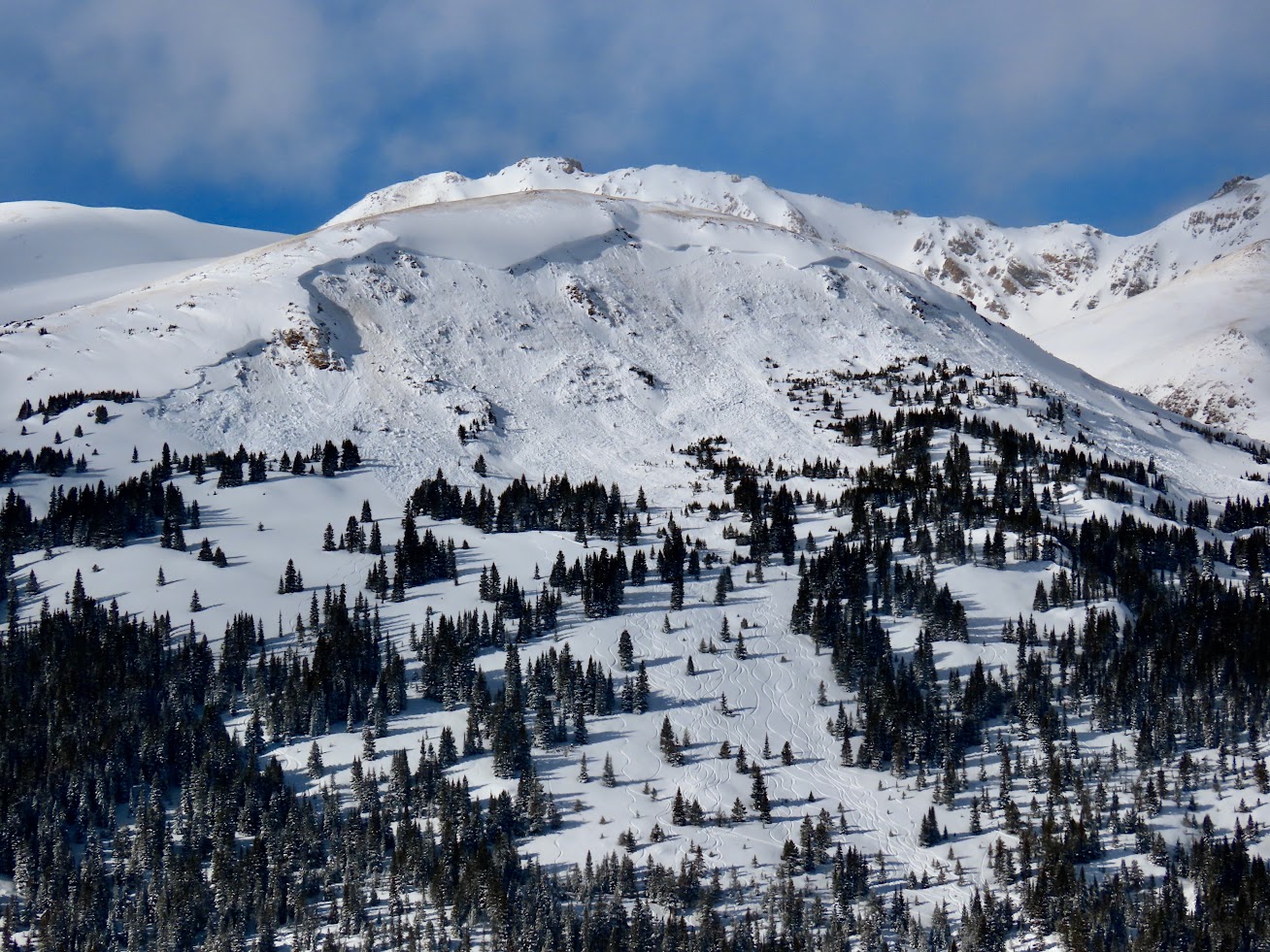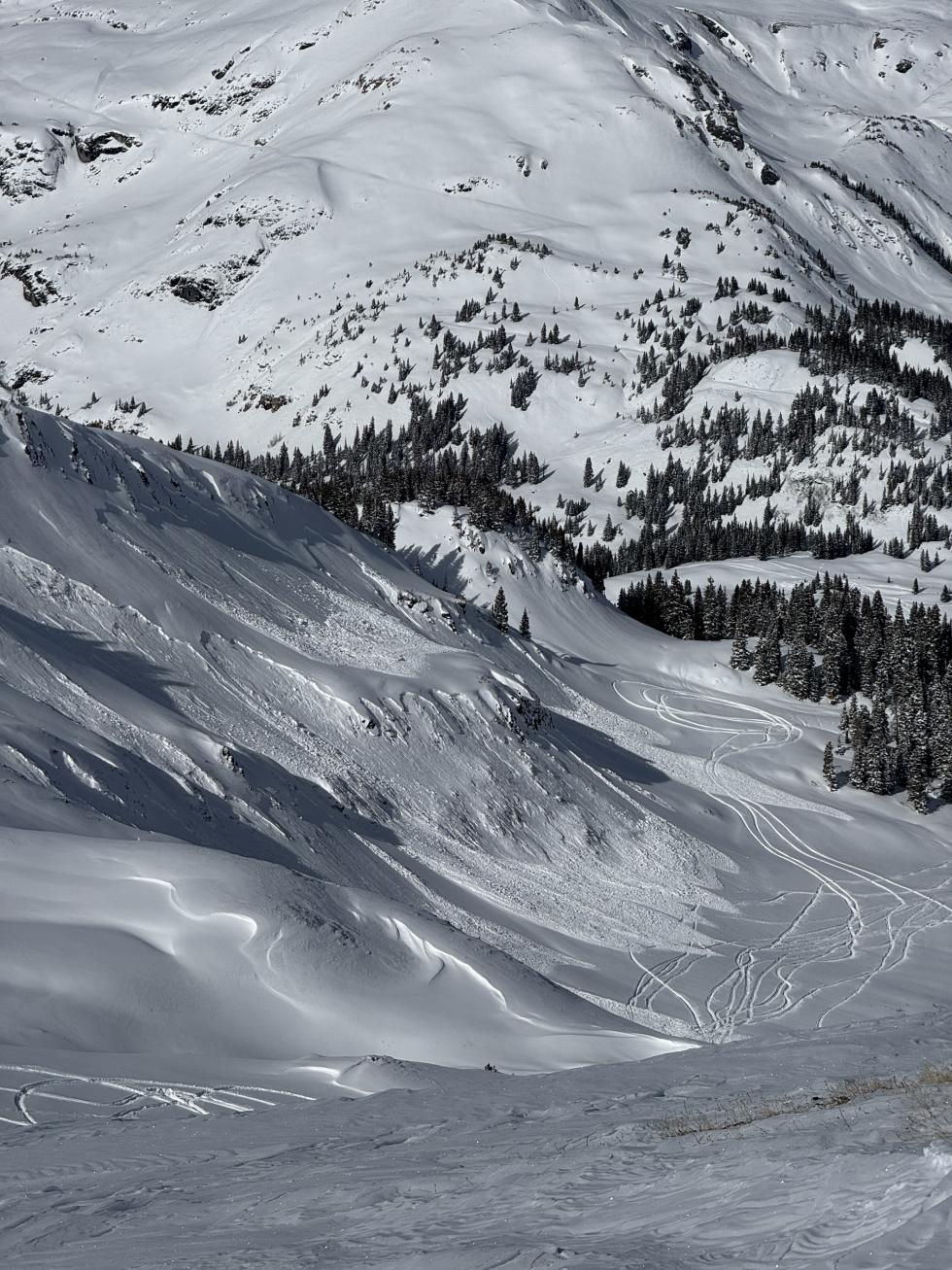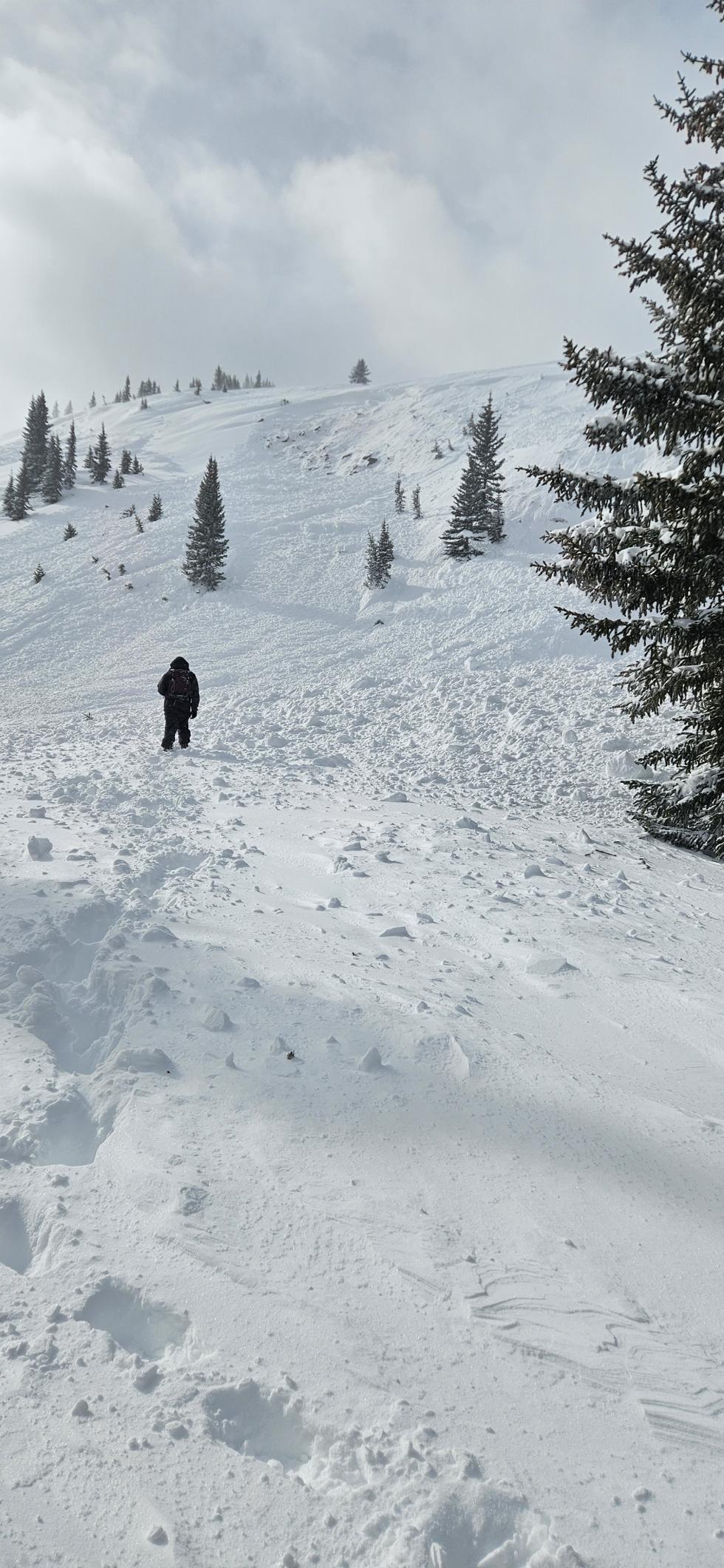Avalanche Weekly Summary - January 2, 2025
Avalanche Watches, Warnings, and Special Avalanche Advisories were issued across Colorado this past reflecting the dangerous avalanche conditions statewide during a holiday week. In just seven days, 400 avalanches were reported, accounting for 25% of the season’s total of 1,596 avalanches recorded since October 1. Five people were caught but not buried. Thankfully we ended the busy holiday period without any significant accidents.
Northern Mountains
A holiday storm sequence brought 1.5 to 2 feet of snow to the Northern Mountains over a week, followed by strong westerly winds that formed thick slabs on wind-loaded slopes. Observers reported 108 avalanches in the last week, including two D3 avalanches on December 31 and January 1. Many avalanches were remotely triggered, demonstrating the danger of steep terrain above or adjacent to travelers. Three people were caught in avalanches, including a partial burial and self-rescue on Berthoud Pass on January 2. Another noteworthy event was this very large avalanche on Mt. Trelease above I-70 near the Eisenhower Tunnel. It was very large both in general (D3) and for this terrain feature (R4). It was remotely triggered by skiers from low-angle terrain. There were at least three parties in the area. Luckily, nobody was involved, but it was a close call.

Central Mountains
The Central Mountains received 1 to 3 feet of snow this past week, with areas like the Ruby and Ragged Ranges receiving the deepest accumulations. A warm-up on Sunday settled the storm snow, leaving a thin crust now buried in the middle of the recent storm snow at mid and low elevations. At least 220 reported avalanches, many remotely triggered, ran as the new loads overwhelmed a weak old snow layer formed in mid-December. One person was caught in an avalanche near Marble.
Southern Mountains
A potent winter storm delivered almost 2 feet of snow to the northwestern San Juan Mountains, with around a foot elsewhere in the Southern Mountains. This new load added to an already active snowpack. Observers reported 69 avalanches, with 15 over D2. There were a few reports of skiers triggering small avalanches and being involved in moving snow but no one was taken for a significant ride or buried.
Heading Into the Weekend
The snowpack remains highly unstable, and dangerous avalanche conditions will last into next week, and maybe beyond. You can trigger avalanches from afar, below, above, or adjacent to steep terrain. These avalanches can break multiple feet deep and grow large enough to bury or kill a person, especially in wind-loaded and deeply drifted snow. To stay safe, use extreme caution and prioritize careful route finding. You can find problems on most slopes across the Northern and Central Mountains: Avoid any steep terrain that faces west through north to southeast. and always check the latest avalanche forecast. Stay informed and cautious to ensure a safe weekend in the backcountry!


